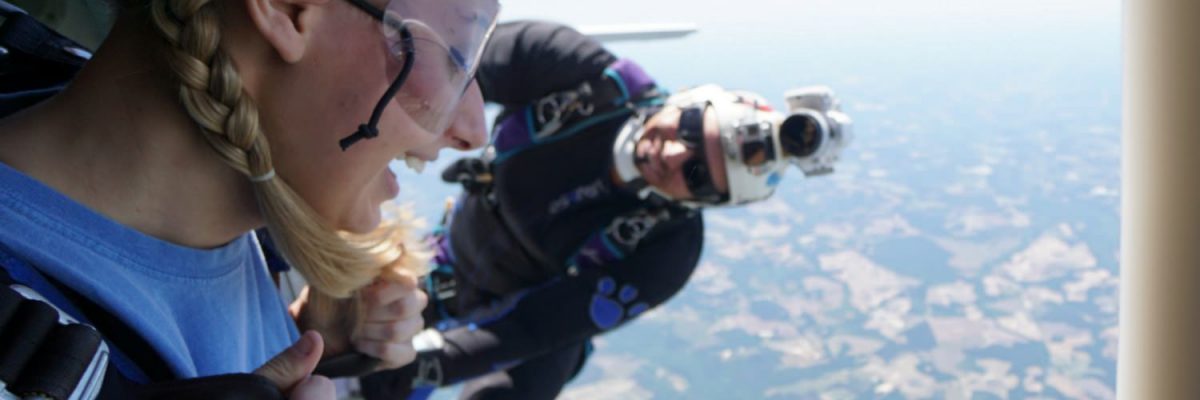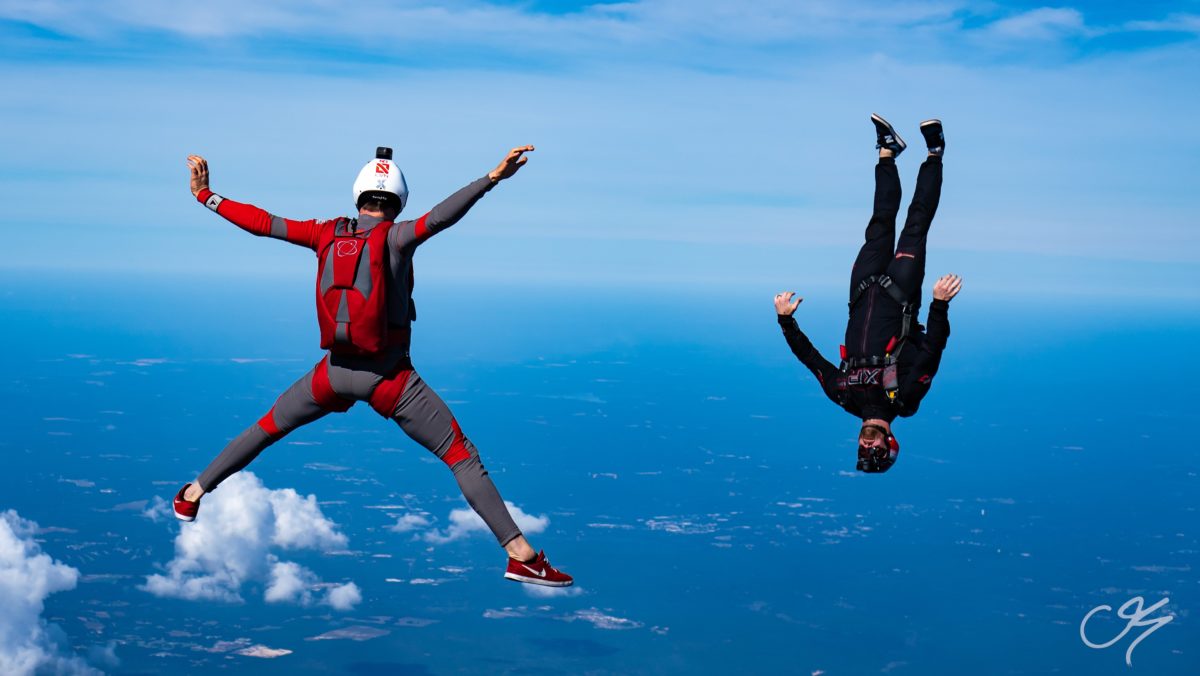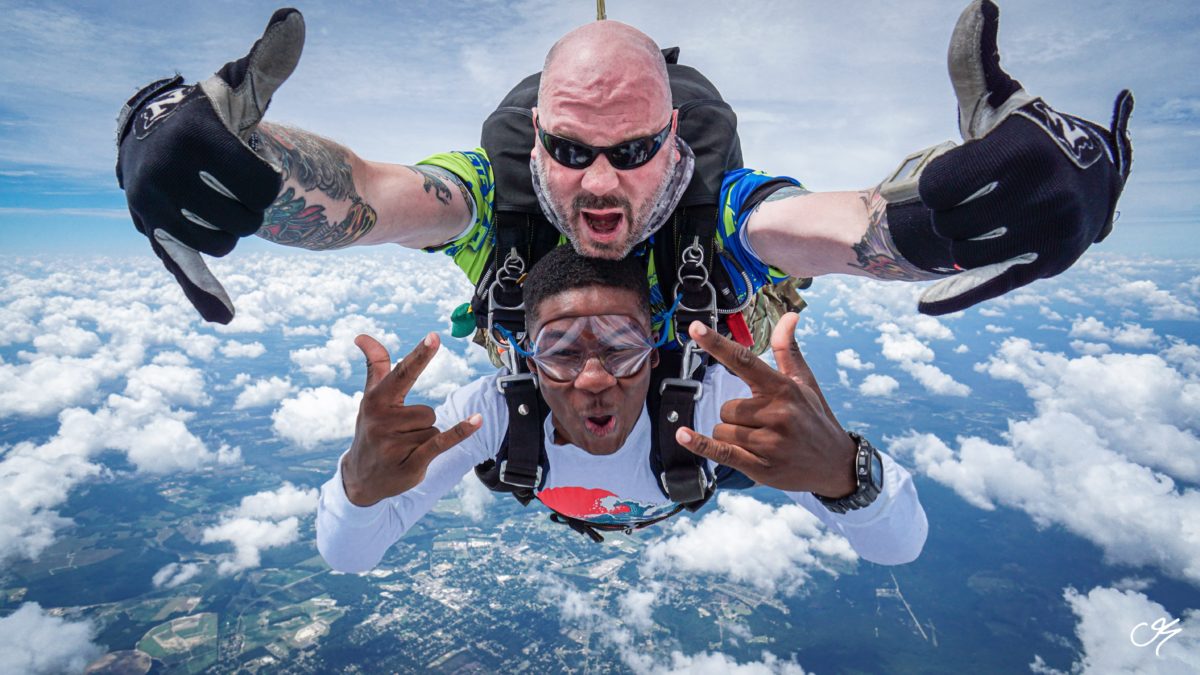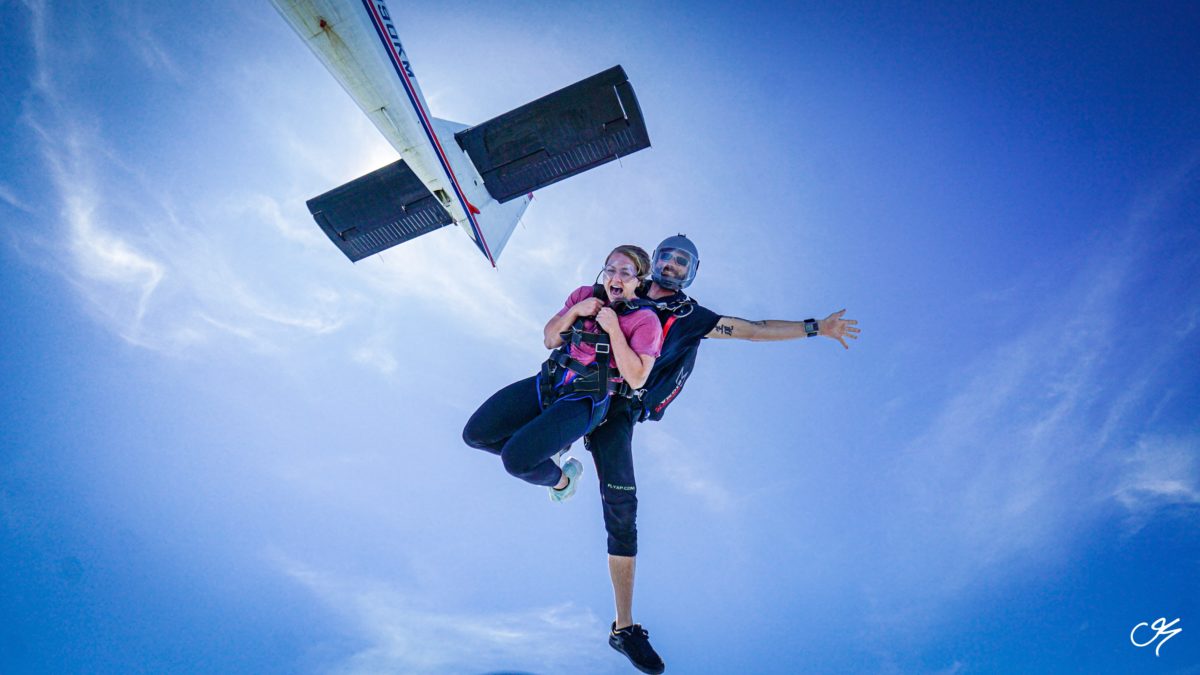
How Risky Is Skydiving?
Friday, January 12, 2024
- Team FlyXP
- 1/12/24
- 0
- Skydiving, Tandem Skydiving
Life is all about risks, even walking out of your front door has a certain amount of risk attached to it. We understand that these risks shouldn’t prevent us from living a life full of passion and joy – which is why humans consistently seek stimulation throughout life.
Adventurous souls seeking thrill often find themselves drawn to the adrenaline-pumping journey of living life on the edge through various extreme sports including skydiving. The allure of hurling yourself into the unknown, vast blue skies with nothing but a parachute on your back is undeniable. But how risky is skydiving?
Without getting too dark, let’s delve a bit deeper into the statistics of skydiving safety so you can decide for yourself if the risks are worth it.

How Many Skydiving Deaths Are There Per Year?
Our community of skydivers is dedicated to the safety of everyone within our sport so that we can bring the transformative experience of skydiving to all. The United States Parachute Association (USPA) strives to carefully document every skydiving injury or death and what caused it so that we can continually learn how to make skydiving safer.
According to the USPA, there has been an average of about 18 skydiving deaths per year reported in the United States over the last decade. They have recently reported an average of 3.9 million jumps in 2022, with an estimated 20 skydiving-related fatalities. This translates to approximately one fatality per 200,000 jumps. Injuries requiring hospitalization occurred in less than two per 10,000 cases, making skydiving statistically safer than many everyday risks like choking on food.
In a recent study, data was collected from the German, American, and British Parachute Associations. Of the more than 62 million jumps that were evaluated, the average injury rate was 0.044% and the average fatality rate was 0.0011%.
How risky is tandem skydiving?
When focusing specifically on tandem skydiving, where a beginner skydiver is harnessed to a certified tandem skydiving instructor, the risk is even lower. According to the USPA, the average number of tandem skydiving deaths per year over the last 10 years has been one per 500,000 tandem jumps. This makes the odds of tandem skydiving deaths 0.002% for every 1,000 jumps. The structured nature of tandem skydiving coupled with the extensive training and experience of instructors as well as meticulous gear maintenance, contributes to a safer experience for first-time jumpers.

Is Skydiving Dangerous?
How dangerous is skydiving? Like every other activity, skydiving involves a carefully calculated amount of risk. It is important to note that the risk of skydiving can vary based on factors such as experience level, equipment condition, and adherence to safety protocols.
Skydiving accidents and incidents most frequently occur as a result of:
- Parachute malfunction (see below)
- Injury during freefall (e.g. high speed collisions with other skydivers)
- Injury on landing due to improper landing techniques
Issues most commonly arise when experienced skydivers attempt something new or more advanced than they’ve done before. According to the USPA, 50% of the skydiving deaths reported in 2022 were skydivers who had their D-license (i.e. with at least 500 jumps).
One notably dangerous maneuver involves flying the parachute in a way that purposely increases the rate of descent by quickly turning, or “swooping”. If the skydiver makes the turn too low to the ground, it could result in a major injury and even death. According to the USPA, 60% of skydiving deaths in 2022 were due to parachute landing problems, with 40% of those deaths caused by the skydiver intentionally making a low turn while landing the parachute.
When we look at this data, we can deduce that typical, or “standard” skydives, are generally uneventful, with tandem skydives being most routine.
What is the Failure Rate of Skydiving?
Out of the 20 skydiving fatalities reported by the USPA in 2022, two were due to an equipment problem, another two were due to incorrect emergency procedures performed by the skydiver, and one was due to a low reserve parachute deployment.
Even when skydiving equipment is inspected and maintained frequently, the unexpected can happen. Parachutes properly deploy 99% of the time, with one in every 1,000 parachutes not always operating at 100% efficiency.
In skydiving, the failure of the main parachute to open or operate properly is called a parachute malfunction. Parachute malfunctions can be categorized as either a total malfunction, where the parachute is not activated or is activated but does not comply, or a partial malfunction where the parachute is deployed but is not landable. Parachutes can malfunction for several reasons but it is usually due to either improper packing, poor body position during deployment, or faulty equipment.
If the main parachute fails, the skydiver will perform emergency procedures in order to deploy the backup, or reserve, parachute. Reserve parachutes are required to be inspected and repacked by a certified Federal Aviation Administration (FAA) rigger every 180 days, regardless of whether or not it has been deployed. Also, there is specialized equipment, such as the Automatic Activation Device (AAD) and Reserve Static Line (RSL), that aid in automatically deploying the reserve parachute if the skydiver is unable to do so for any reason.
The chances of a parachute failing are less common than you might think. One out of 721 skydivers reported using their reserve parachute in 2021. The fact is that the majority of skydiving accidents are a result of human error and lack of proper judgment while landing a perfectly functioning parachute.
All we can do is take this data and use it to learn how to become better skydivers, make adjustments to skydiving equipment if needed, and improve overall safety within the skydiving community.

Is it a Bad Idea to Go Skydiving?
Addressing the question of whether it is a bad idea to go skydiving ultimately depends on the individual’s perspective on risk and adventure. The USPA reported that two of the skydiving deaths in 2022 were related to a preexisting medical problem. So, when you’re thinking about taking on the skies, please be sure your doctor approves of you skydiving and that you meet all skydiving requirements before you book your jump.
As an aspiring skydiver, you should prioritize selecting a reputable dropzone; come prepared for your skydive; pay attention during the training session; follow the instructions of your instructor; and adhere to safety protocols.
Skydiving is an extreme sport with inherent risk. However, knowing the safety statistics and rigorous safety standards – and the life-changing exhilaration and empowerment that skydiving brings – many enthusiasts agree that the rewards of skydiving far outweigh the risks.
Think you’re ready to take on the phenomenal adventure of skydiving? Book your jump with one of the world’s most reputable skydiving dropzones, Skydive Paraclete XP! Blue skies, bold friends!
Tags: skydiving risks, skydiving safety
Copyright © 2025, Skydive Paraclete XP, All Rights Reserved.
DropZone Web Design & Marketing by Beyond Marketing, LLC
